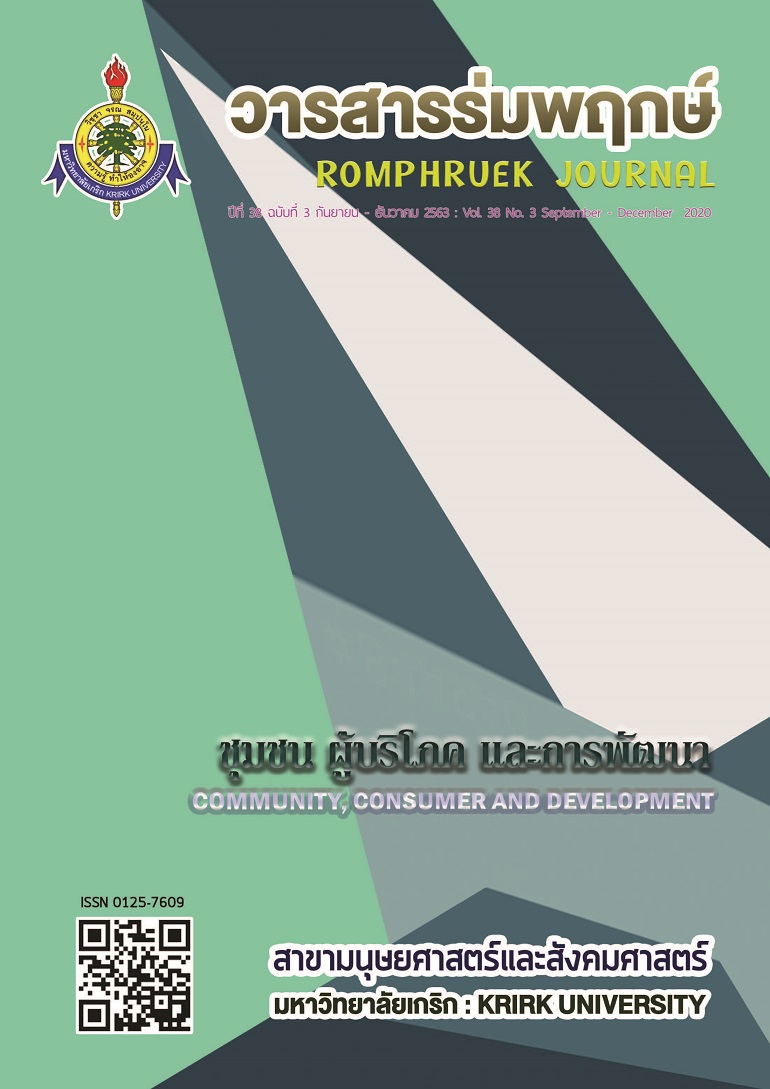San-Lue as Exploration Leadership Quality of Middle-level Manager in Minor Enterprises in China
Main Article Content
Abstract
Middle-level managers have a very important influence in the organization. The leadership quality of middle-level managers could play a connecting role in the organization. As one of the classical military work of China, San-Lue has a clear description of the leadership quality of generals. In this paper, the researcher explores the description of the quality of generals in San-Lue and combine of the leadership quality proposed in western management science. This paper expected that the description of general leadership quality in San-Lue is tallied the quality of middle-level leaders in minor enterprises in China. A comprehensive study of the San-lue and Henry's theory of leadership quality, it fits for the Middle-level manager in Guangzhou minor enterprises.
Article Details
Every article published in the Romphruek Journal of the Humanities and Social Sciences is the opinion and point of view of the authors. Thery're not the viewpoint of Krirk University or the editored department. Any part or all of the articles for pablication must be clearly cited.
References
Armstrong, M. (2008). How to be an even better manager. Engineering & Technology, 3(21), 72-75.
Archibald, G. C. & Baumol, W. J. (1960). Business behavior, value and growth. Economica, 27(287), 274.
Bass, B. M. & Avolio, B. J. (1995). Improving organizational effectiveness through transfor- mational leadership. Journal of Academic Librarianship, 21(3), 210-211.
Bogdewic, S. P., Baxley, E. G., & Jamison, P. K. (1997). Leadership and Organizational Skills. Fam Med, 29(4), 262-265.
Clegg S., Kornberger M., & Pitsis T. (2016). Managing and Organisations, 4th Ed.
UK : Sage publications Ltd. Longdon.
Ferreira, A., & Otley, D. (2009). The design and use of performance management systems : An extended framework for analysis. Management accounting research, 20(4), 263-282.
Garvin, D. A., & Roberto, M. A. (2001). What you don't know about making decisions. Harvard business review, 79(8), 108-119.
Gregory Stone, A., Russell, R. F., & Patterson, K. (2004). Transformational versus servant leader- ship : A difference in leader focus. Leadership & Organization Development Journal, 25(4), 349-361.
Henry, W. E. (1949). The business executive : the psychodynamics of a social role. American Journal of Sociology, 54(4), 286-291.
Kipnis, D., & Lane, W. P. (1962). Self-confidence and leadership. Journal of Applied Psychology, 46(4), 291.
Koehn, N. F. (2012). From calm leadership, lasting change. (19 March, 2562) Retrieved from https://files.eric.ed.gov/fulltext/ED360702.pdf.
Leithwood, K., & Steinbach, R. (1993). Total quality leadership : Expert thinking plus transfor- mational practice. Journal of Personnel Evaluation in Education, 7(4), 311-337.
Larsson, G. (1999). Nya Krav på framtidens ledare [New demands on the future leaders]. Psykolog Tidningen, 45(12-13), 8-10.
Li Jianfang. (2009). On leaders' rational use of talents. Industry and Technology Forum, 8(001), 251-252
李俭芳. (2009). 浅谈领导者对人才的合理使用. 产业与科技论坛, 8(001), 251-252.
Li Wenming. (2015). Interpretation of talent management concepts and methods in LiuTao and san lue.
Journal of Qingdao University of science and Technology (SOCIAL SCIENCE EDITION), 31(2), 37-46.
李文明.(2015).《 六韬》《 三略》之人才管理理念与方法解读. 青島科技大學學報 (社會科學版), 31(2), 37-46.
Pian Yuqian. (2007). Seven books of Wujing : Huangshi gongsan Lue, LiuTao, Li Weigong, Taizong of Tang Dynasty (Vol.2). Beijing : Zhonghua Book Company.
骈宇骞. (2007). 武經七書:黄石公三略;、六韬;、唐太宗李卫公 问对(Vol.2). 北京 : 中华 书局.
Stogdill, R. M. (1948). Personal factors associated with leadership : A survey of the literature. The Journal of psychology, 25(1), 35-71.
Trahair, R. B. R. C. S. (1971). Explorations in managerial talent. Admini-strative ence Quarterly, 16(4), 551-552.
Voon, M. L., Lo, M. C., Ngui, K. S., & Ayob, N. B. (2011). The influence of leadership styles on employees’ job satisfaction in public sector organizations in Malaysia. International Journal of Business, Management
and Social Sciences, 2(1), 24-32.
Wang Huifen. (2000). The leadership style in the ancient military book "San-Lue". Leading science forum, 2000(1), 62-64.
王惠芬. (2000). 古代兵书《 三略》中的领导方式. 领导科学论坛, 2000(1), 62-64.
Wooldridge, B., & Floyd, S. W. (1990). The strategy process, middle management involvement, and Organizational performance. Strategic management journal, 11(3), 231-241.
Zhou Zhenlin, Kong Fanling, Yang Linying, Han Bin, Li Jiaqin, & Ding Yangquan. (2003). Leadership and its competence. (8 February, 2562) Retrieved from http://idl. hbdlib.cn/ book/00000000000000/pdfbook/003/012/136621.pdf.


